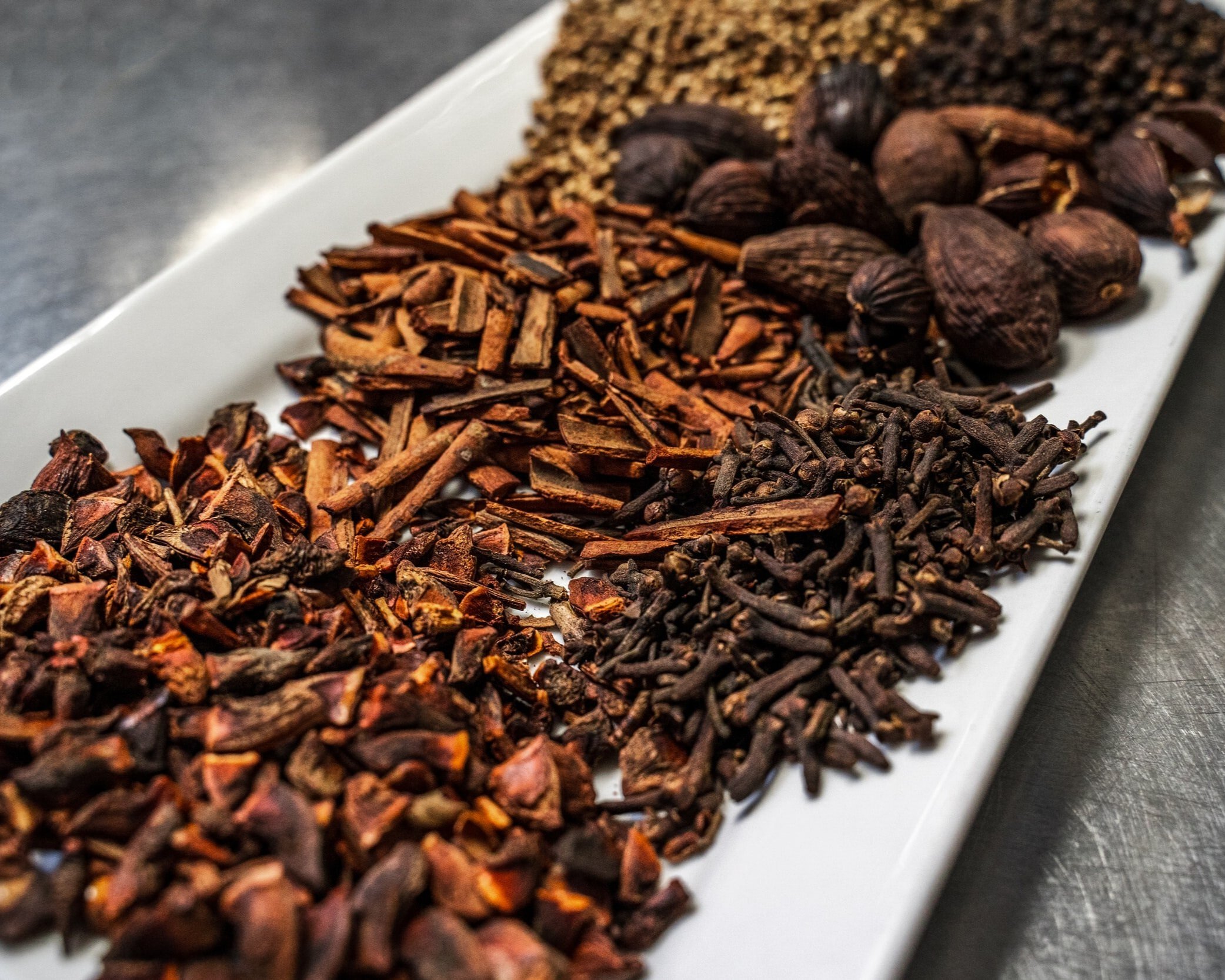9 scientific facts about the benefits and dangers of cocoa
9 scientific facts about the benefits and dangers of cocoa
Cocoa is everyone's favorite, delicious, delicate drink that charges you with a good mood and gives your body a lot of useful substances that perfectly strengthen health. It is a powdery paste obtained from the fruit of the cocoa tree, as a result of their preliminary drying and grinding.
Cocoa has a rather rich and interesting history. Cocoa trees were originally exclusively wild-growing. They grew in warm climates, along the coast of Mexico, in Central and South America. Currently, there are entire cocoa plantations in Africa and the islands of Asia.
Archaeological finds prove that people used cocoa as early as the time of the Olmecs in the 18th century. BC. Back then, people used only the pulp of cocoa beans to make mash, ignoring the beans themselves.
The Maya tribes revered cocoa beans and treated them with awe, considering them the food of the gods. They also made a special drink for especially rich people, consisting of water, cocoa, maize, vanilla and hot pepper with salt.
The first Europeans to taste cocoa were members of the expedition of Christopher Columbus. However, these "strange bitter nuts" did not impress them, so they did not take them with them to Europe. 17 years later, the Spanish conquistador Hernan Cortez landed on the Yucatan Peninsula, where the locals presented him with a drink with the mysterious name "chocolatl" as a gift. It is known that Cortez did not like its taste, however, he appreciated its invigorating properties and even sent several copies to King Charles V. This was the first step on the way of this product to fame in Europe. And a few years later, the first ship with a cargo of cocoa on board arrived in Europe. As a result, Charles V was so impressed with the properties of the cocoa bean drink that the drink was put into production.
Tropical tree bean drinks and dishes are controversial among nutritionists, but current research shows that cocoa contains important compounds that are beneficial to health.
We will tell you why cocoa is valued by nutritionists and how to drink it correctly in order to get the most out of it. After all, the thick rich taste is not the only plus of the drink.
Cocoa nutritional value
Nowadays, the cocoa drink is also very much appreciated. It is loved by both children and adults, and for good reason, because it is not only very tasty, but also healthy. The cocoa drink is full of vitamins, trace elements and minerals, polyphenols and carbohydrates.
Cocoa is made by crushing the beans to remove the fats. The resulting oil is also used in cooking and cosmetology. Despite its beneficial properties, nutritionists advise to consume the drink in moderation due to its high calorie content. A small cup of cocoa (86 g) contains:
34% carbohydrates
50% fat
16% protein
196 Kcal
Healthy vitamins as a percentage of the daily value:
1.9 mg vitamin B3 - 9%
2.2 mg vitamin K - 3%
0.2 mg vitamin B2 - 12%
27.5 mg folic acid - 7%
Natural unsweetened cocoa contains many minerals. One serving contains:
110 mg calcium - 11%
11.9 mg iron - 66%
429 milligrams magnesium - 107%
631 mg phosphorus - 63%
1131 milligrams potassium - 37%
12.3 mg selenium - 18%
Cocoa contains natural antioxidants
The polyphenols found in cocoa beans have health benefits. They help reduce inflammation, improve blood flow, lower blood pressure, and increase good cholesterol.
Cocoa is one of the richest sources of polyphenols, along with some fruits, vegetables, tea, and red wine. However, the treatment of cocoa with alkali, which is often used by manufacturers, can lead to a loss of beneficial properties: in this case, flavonol is reduced by 60%. Therefore, it is better to give preference to organic products with minimal processing.
Cocoa lowers blood pressure
Cocoa increases blood nitric oxide levels. The effect of lowering blood pressure was first noted among residents of Central America, comparing cocoa drinkers and those who did not. Doctors believe that this is the result of the flavonoid content in the drink, which improves the function of blood vessels.
The researchers analyzed 35 different experiments in which patients consumed 1.4-10.5 grams of cocoa daily. There was a slight decrease in blood pressure indicators - an average of 2 mm Hg. The maximum amplitude was observed in those who suffered from high blood pressure, as well as in the elderly.
Cocoa reduces the risks of heart attack and stroke
Flavonoid-rich cocoa dilates arteries and blood vessels, lowers bad cholesterol and has a blood thinning effect similar to aspirin. These properties directly affect the prevention of stroke and heart attack. A review of nine studies involving more than 150,000 people found that consistent cocoa consumption has positive health benefits by reducing the risk of heart disease.
Cocoa improves brain function
Several experiments have confirmed that cocoa can reduce the risk of neurodegenerative diseases by improving blood flow. Flavonoids in the drink are involved in the biochemical processes of the production of neurons and molecules for the functioning of the brain. They also affect the production of nitric oxide, which relaxes the vascular muscles, resulting in improved blood flow.
A study in older adults showed that cocoa consumption increased blood flow to the brain by 8% one week after the start of the experiment and by 10% after two. In addition, doctors have found that daily cocoa improves mental performance in people with and without mental disabilities. Scientists believe that cocoa can prevent Alzheimer's and Parkinson's, but more research is needed for definitive conclusions.
Cocoa improves the mood
Cocoa can improve mood and help manage depression symptoms. This is due to tryptophan, an amino acid that is a precursor to serotonin, a natural stabilizer for emotional well-being. Although scientists do not exclude that the positive effect is also enhanced by the use of a tasty drink and the caffeine it contains.
When a person drinks cocoa, the adrenal glands produce a natural substance called phenylethylamine. It is also produced by the body with positive stimulation - a feeling of being in love and aroused. The substance causes an increase in heart rate, increases concentration. In addition, cocoa contains anandamide (translated from Sanskrit - "divine joy"), which has cannabioid properties (affecting the human nervous system) and mimics the action of THC, a psychoactive cannabis molecule (the official name of marijuana).
A study in pregnant women found that eating chocolate was associated with lower levels of chronic stress and improved mood. Another experiment, conducted among older men, confirmed that cocoa improves psychological well-being and increases life satisfaction.
Cocoa has anti-diabetic effects
Excessive cocoa consumption raises blood sugar levels, especially when choosing a sweetened beverage or non-bitter chocolate. But laboratory studies have shown that flavonoids can slow down the digestion and absorption of carbohydrates in the intestines, improve insulin secretion, and stimulate muscle absorption of sugar . Frequent consumption of sugar-free cocoa reduces the risk of developing type 2 diabetes.
Despite the promising results, there are inconsistencies in the experiments, and some of them did not reveal a clear positive effect . More research is needed, although scientists have directly linked the effects of cocoa to cardiovascular health and diabetes prevention.
Cocoa helps control weight
Paradoxically, a high-calorie drink and chocolate bars help you stay in shape. Cocoa regulates the absorption of carbohydrates, reduces appetite through nutritional value, and enhances fat oxidation. Studies have confirmed that people who drink the drink frequently had a lower BMI (body mass index) than those who cut it out. The authors of another experiment claim that cocoa negatively affects a person's weight, but in this case, the scientists did not distinguish between white, milk and dark chocolate. Only the latter has the beneficial properties of beans with minimal side effects.
Cocoa reduces asthma symptoms
Asthma is a chronic condition that causes abstraction and inflammation of the airways. Cocoa contains theobromine and theophylline - substances that help relieve asthma symptoms [32], [33], [34]. The first is similar in effect to caffeine and helps with a persistent cough, the second allows the lungs to expand more; the upper airways relax and the area of inflammation is reduced.
Cocoa has antibacterial and immunostimulating properties
Several studies are convinced of the protective effect of cocoa. The drink has a positive effect on the gums and teeth, protecting them from caries. It contains many compounds with an antibacterial effect that help keep the oral cavity healthy.
Chocolate is considered harmful to the skin, but in fact, the polyphenols contained in cocoa provide protection from the sun, promote blood circulation in the upper layers of the epidermis, and improve cell structure.
Harm to cocoa.
Cocoa can support health and beauty, but too much cocoa in the diet will have a negative effect on weight and over-stimulate the nervous system. Any product, regardless of the abundance of positive qualities, should be consumed in moderation. Experts believe that a safe dose of chocolate is 50 grams per day. That is, about half of the bar, but with a cocoa content of at least 50%.
Cocoa drink enhances the functions of the pancreas, so frequent use is not recommended for people with high acidity of the stomach. Remember the stimulating properties of cocoa: like coffee, it is better not to drink it shortly before bedtime. Allergic reactions are not excluded, especially with frequent use, so it is better to limit yourself to two cups of the drink a day.
How to choose and store cocoa
When choosing, pay attention to what exactly you are looking at: cocoa powder is the same cocoa. They are distinguished by the method of preparation. In the first case, you will have to brew the drink yourself, in the second case, it is enough to dilute it with water or milk.
When buying cocoa powder, evaluate the tightness of the package, the degree of grinding of the beans and their appearance. The product should be smooth, chocolate colored and have a pleasant aroma.
The cocoa drink must contain a certain amount of lecithin in order to avoid sediment on the bottom during preparation. Also, in a good cocoa drink, the mass fraction of fat exceeds 15%. A good mixture is finely ground and free of solid particles.
To store cocoa powder or cocoa drink, you should use a sealed metal container. The storage area must be dry. More often than not, the storage of a product should not be changed for one year. The product of the refrigerator should be excluded, since cocoa can collect in sticky lumps, from which it will not be possible to prepare a drink of a uniform consistency.













